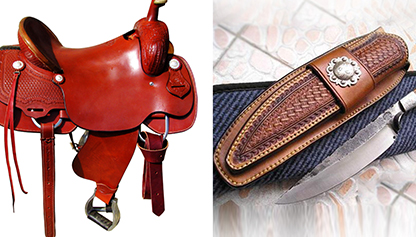sewing heavy duty
The Ultimate Guide to Heavy Duty Sewing Machines
In the world of sewing, the term heavy duty is often thrown around, but what does it really mean? For both amateur and professional crafters, a heavy-duty sewing machine can be a game changer. These machines are designed to handle tough fabrics and demanding projects, making them a popular choice for those who require reliability and power in their sewing endeavors.
What is a Heavy Duty Sewing Machine?
A heavy-duty sewing machine is specifically built to withstand the rigors of sewing thicker and tougher materials such as denim, canvas, leather, and upholstery fabrics. Unlike standard sewing machines, which may struggle with these tougher textiles, heavy-duty models come equipped with stronger motors, reinforced frames, and specialized components that facilitate smooth sewing on challenging materials.
One of the defining features of heavy-duty sewing machines is the motor power. Most models boast a motor that can provide significantly more torque than standard machines, allowing for quicker stitching speeds and the ability to work through multiple layers of fabric without skipping stitches.
Key Features to Look For
When searching for the perfect heavy-duty sewing machine, there are several essential features to consider
1. Stitch Variety While heavy-duty machines are often used for straight stitching, the best models also offer a variety of stitches, including zigzag, decorative, and even buttonhole options. This versatility allows for greater creativity in your projects.
2. Metal Frame A sturdy metal frame contributes to the durability and stability of the machine. This feature is essential when sewing heavy fabrics, as it minimizes vibrations and prevents the machine from skipping stitches.
3. Walking Foot Many heavy-duty sewing machines include a walking foot or offer it as an optional attachment. This foot helps to evenly feed multiple layers of fabric, ensuring that thick materials are sewn smoothly without puckering.
4. Needles and Feed Dogs Heavy-duty machines often come with specialized needles that can handle thicker threads and fabrics. Additionally, they may feature stronger feed dogs that effectively grip and move heavy loads.
5. Speed Control A variable speed control feature is beneficial for delicate projects or when working with multiple layers. It allows the sewer to adjust the speed according to the complexity of the task at hand.
Benefits of Using a Heavy Duty Sewing Machine
Investing in a heavy-duty sewing machine brings a multitude of benefits
sewing heavy duty

- Efficiency These machines are designed to sew quickly and handle tough materials with ease, which can drastically reduce project completion times.
- Longevity Heavy-duty models are typically built to last. Their robust construction means they can endure more wear and tear compared to standard sewing machines.
- Versatility Beyond heavy fabrics, many heavy-duty machines can tackle a wide range of sewing projects, from garment construction to home decor, and even quilting.
- Lesser Maintenance Because of their solid build and quality components, heavy-duty sewing machines often require less maintenance than lighter models, making them a convenient choice for busy sewists.
Popular Heavy Duty Sewing Machines
Some well-known brands in the heavy-duty sewing machine market include Brother, Singer, and Juki. Each brand offers a range of models that cater to different needs and budgets.
For example, the Brother ST371HD is an excellent entry-level choice, offering a good balance of features and affordability. On the other hand, the Singer Heavy Duty 4423 is renowned for its power and speed, making it a favorite among crafters looking to work with challenging materials.
Tips for Using a Heavy Duty Sewing Machine
1. Choose the right needle and thread Heavy-duty projects require specific needles and threads. Always select a needle designed for thick materials and use polyester or cotton threads that can withstand the strain.
2. Adjust tension settings Before starting your project, make sure to adjust the machine’s tension settings to suit the fabric you’re working with. This helps in avoiding puckering and ensures clean stitching.
3. Test on scrap fabric Always test your stitches on a scrap piece of fabric before diving into the actual project. This practice allows you to fine-tune settings and avoid potential mishaps.
4. Take your time When sewing through multiple layers of fabric, don’t rush. Allow the machine to do its work without forcing the fabric, which can lead to uneven stitches or damaged components.
Conclusion
Whether you’re a seasoned professional or a dedicated hobbyist, a heavy-duty sewing machine can elevate your crafting experience. Invest in quality machinery, familiarize yourself with its features, and explore new creative avenues with confidence. With the proper tools at your disposal, there are no limits to what you can sew!
-
Industrial Cylinder Arm Sewing Machine: Revolutionizing Heavy-Duty SewingNewsJul.28,2025
-
Cylinder Arm Sewing Machine: Perfect for Special Sewing ApplicationsNewsJul.28,2025
-
Cylinder Bed Sewing Machine: Essential for Sewing Complex MaterialsNewsJul.28,2025
-
Heavy Duty Sewing Machine: The Essential Tool for Industrial ApplicationsNewsJul.28,2025
-
Computerized Pattern Sewing Machine: Revolutionizing Precision StitchingNewsJul.28,2025
-
Heavy Duty Industrial Sewing Machine: Power Meets PrecisionNewsJul.28,2025
-
Leather Sewing Machine: The Industrial Standard for Tough MaterialsNewsJul.18,2025





























